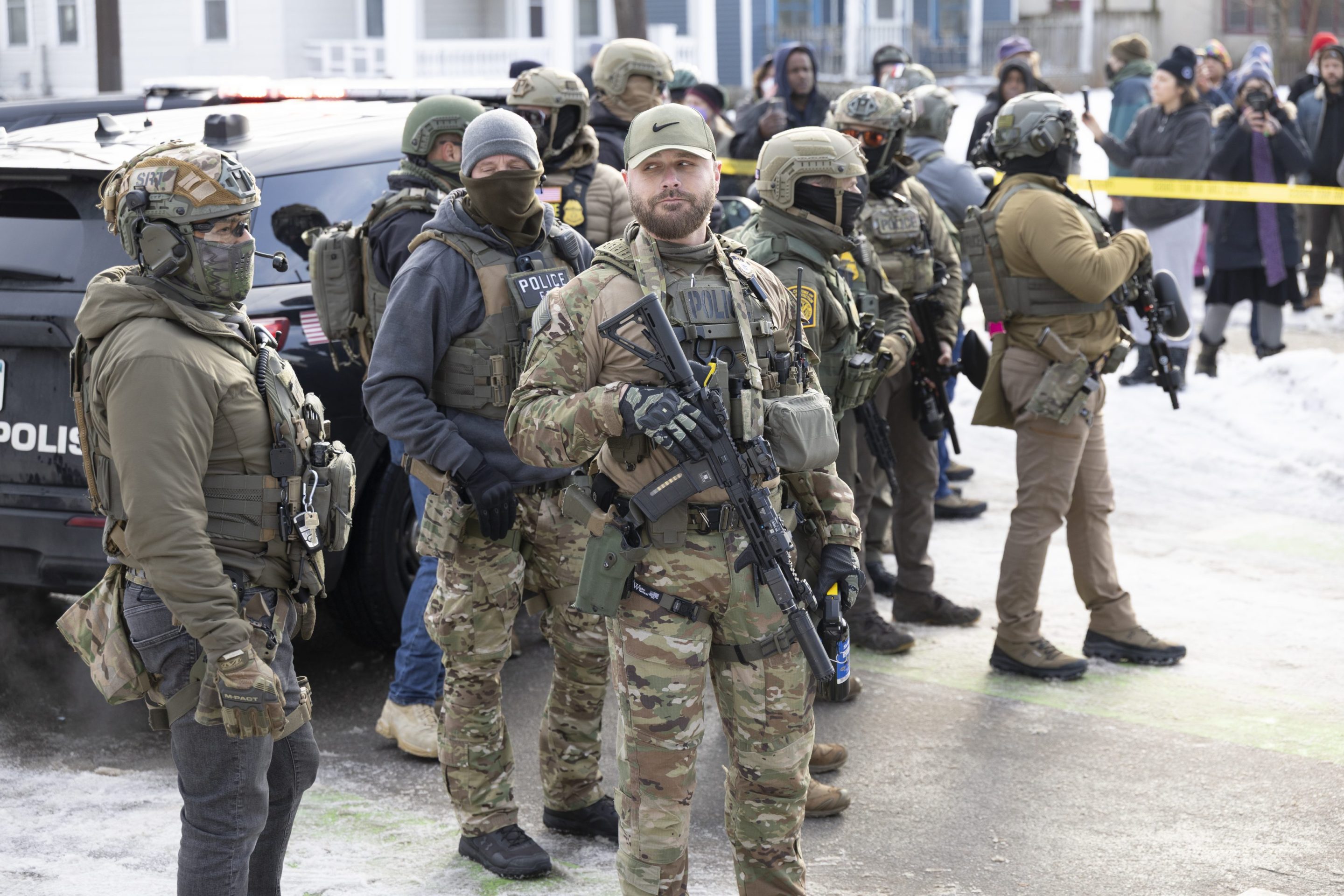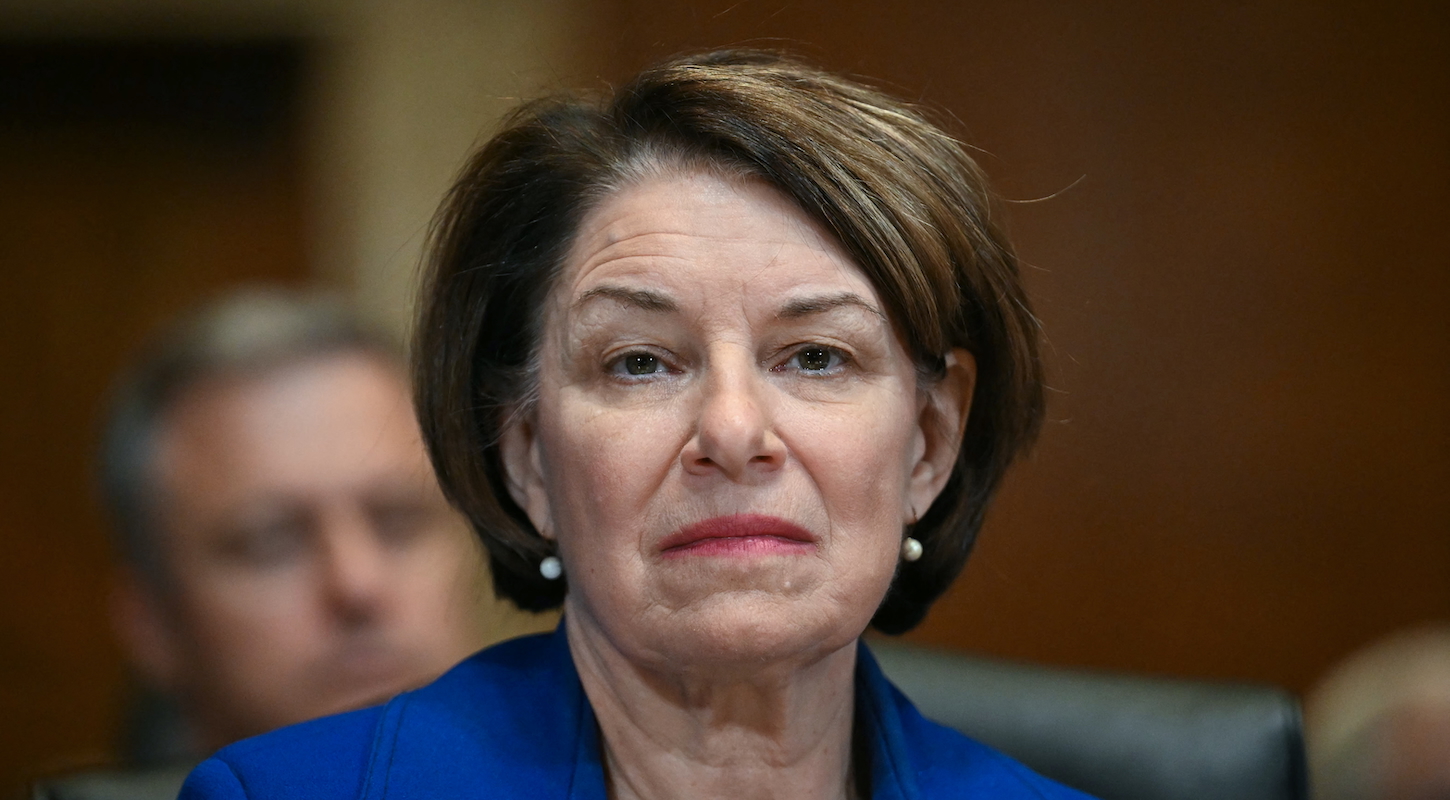It shouldn’t be that hard to find a stadium in the middle of a big city, but in late July I was sitting in a red car outside a rickety metal gate in Srinagar, looking for a sign, literal or otherwise.
Shabir, the guy driving, paused along the side of the road. We waited for a guard to pop his head out from somewhere, but no guard materialized. For days, Shabir had been guiding me around the summer capital of Jammu and Kashmir, one of two Muslim-majority territories claimed by India, honking through traffic and muttering at jeeps full of Indian soldiers who parked four feet off the curb, playing with their phones while dressed for war.
We were looking for Sher-i-Kashmir Stadium, a cricket ground that once hosted arguably the most famous sporting event in the territory’s history, but was forced to recede into the Srinagar cityscape, like a repressed memory. Yet the pitch has remained the fraught and nostalgic center of Kashmir cricket despite falling into disrepair. It’s where, in 1983, India played the West Indies in Jammu and Kashmir’s first international cricket match, a day of huge embarrassment for India, with consequences that still throttle any progress Kashmiri cricket tries to make.
Shabir called a guy and got some new directions. We rolled through a different gate and into a miniature walled city, full of parking spaces and small roads that branched off the main one like vines and wound their way to a series of government buildings. He drove past an army compound where five or six soldiers stood outside a gate, machine guns dangling from straps around their shoulders. We hit a dead end, so Shabir reversed and we passed the soldiers again, but neither of us could see anything that looked like a stadium. He put the car back in drive and yet again we rode up to the troops.
If you’ve read anything about Kashmir in the last couple years, it was probably that a car bomb killed 44 Indian soldiers here back in 2019, and that months later Jammu and Kashmir’s statehood was revoked, the Indian government cut off high-speed internet for 19 months, and even more soldiers flooded the place, so that there is now more than one for every 11 civilians. That recent history hung over this completely mundane moment as Shabir and I pulled in front of those five or so guys with machine guns, every one of their eyes following us while we eased to a stop. Shabir rolled down his window and asked them for directions. A few minutes later, we walked out onto that hallowed circle of grass.
I pulled out my camera. On the far side of the ground, the bleachers were hardly visible. They’d worn to the color of the trees behind them or they’d dropped to the earth and vanished, leaving only a series of poles sticking out of the ground to mark where people used to sit. The old scoreboard still stands, though its white letters have sloughed off in chunks, so that it’s not clear what stats it used to track. Muddy stains blot the grass like bruises. I walked to the back fence and watched a dog burst through a gap, run a quick circle, and dash out again. Pants and shirts lined the railing, draped by Indian soldiers who live at the base that runs right up to the pitch. I lifted my camera, but Shabir told me the men in uniform wouldn’t like it if they saw me take a photo in that direction. The base makes security easy to find whenever Indian politicians want to host a rally on the pitch. Workers pound poles into the grass, setting up a platform for speeches. They’ve dug up the ground so many times that Parvez Qaisar—who played at Sher-i-Kashmir a long while back and has worked with the state’s cricketers ever since—told me they’ve ruined the drainage system.
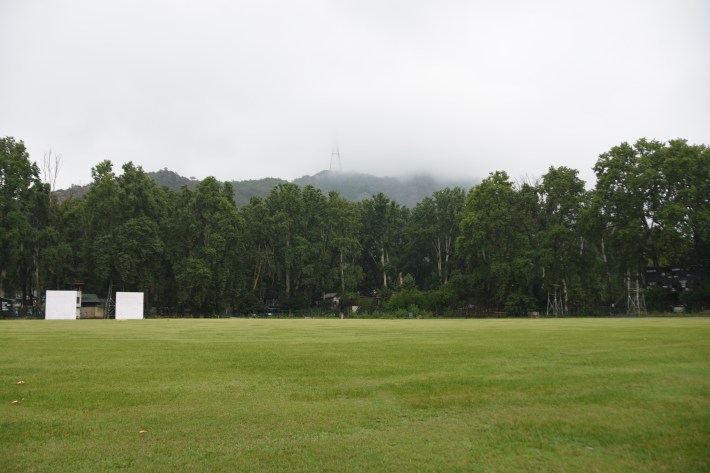
As we were heading out, I turned around and for the first time really took in the trees. They rose broad and elegant above the decrepit bleachers, so much taller than any sycamores I’d ever seen, as though they were the stadium’s natural back wall. They give the place a tranquil, epic feeling, if only the rest of Sher-i-Kashmir were allowed to live up to it. In that way, the stadium represents the state of Kashmiri cricket itself—abundant potential that survives despite all attempts to snuff it out.
The teams who walked into Sher-i-Kashmir Stadium at that match in 1983 were the best in the world: the West Indies had won both World Cups in the 1970s, and then there was India, who had somehow just beat the champs for their first world title earlier that year.
It wasn’t a match you could afford to miss, and it seems that everyone in Srinagar was either there or knows someone who was. Qaisar, who was then playing for the Jammu and Kashmir state team, was in the bleachers along with his younger brother and teammate Humayun. Shabir was there, just a small kid then, too young to remember much. Over the phone, I mentioned the match to Hafsa Kanjwal, an expert on Kashmir at Lafayette College, and she told me her dad had gone to watch, too.
“This game is one of those moments that gets talked about,” she said.
The match itself was shit. It was a damp, low-scoring slog, the West Indies thumping out their revenge on the Indians. Rain and dust blew across the pitch until the thing was called to an end, but none of that is why people still talk about it, or why its repercussions still pulse through Kashmiri cricket.
“Before the armed rebellion started, the moments when Kashmiris were able to express themselves politically were so few,” Kanjwal said.
This match was one of those rare opportunities. The crowd had been screaming their support for the West Indies from the moment they were allowed inside, though Kashmiris weren’t rooting for them so much as they were rooting against India, the supposed home team.
When the subcontinent was divided into Pakistan and India in 1947, both countries coveted the former princely state of Jammu and Kashmir. Over the course of several wars and skirmishes, India ended up controlling roughly half the region, putting a Muslim majority population under Indian control. Thus, Pakistan turned into something of a hero state for many Kashmiris, not necessarily because they yearned to be a part of it or because Pakistan is almost entirely Muslim, but because it was the nemesis of their nemesis. That affection has always been shown through cricket. Kashmiris shouted their support for Pakistan at the match in 1983, and many of them waved posters of Imran Khan, who was then among the world’s best batsmen and bowlers, and is now Pakistan’s prime minister. The crowd erupted at every West Indies run, but there were a few who didn’t think an Indian loss was enough. India playing a televised match there and calling it “home” was an insult, just another way to stick their saffron, white, and green flag into Kashmiri ground. A group of protestors waited for the lunch break and rushed the pitch, digging at the earth with their heels until police swept across the lawn.
The ground was fine. The match was barely delayed. Police arrested 12 guys who were immediately out on bail. What mattered was the embarrassment. India had just crashed international cricket’s party, winning a World Cup even before England, the inventors of the game, and now their unexpected spotlight shone not on the team but on supposed home fans scraping at the grass. Kapil Dev, the Indian captain, shouted that the groundsmen were “Pakistanis” who had prepared the pitch so that balls would bounce high like the West Indies bowlers wanted. The local chairman only convinced the Indian cricket administration that this wasn’t true by pointing out that the guy who had prepared the wicket—the strip of grass at the stadium’s center—was Hindu.
“After that incident, players from Jammu and Kashmir were not accepted very well at the national level,” Qaisar said. “We were in our prime, so it did affect us.”
Three years later, when Australia played India at Srinagar’s second and so far final international match, Kashmiris were hardly allowed inside their stadium. India had parlayed their surprise 1983 World Cup win into convincing the International Cricket Council to let them co-host the 1987 World Cup with Pakistan (money has always had a way of briefly soothing international conflicts). It would be the first outside of the United Kingdom, and there would be no repeat of the lunchtime protest that might derail their bid.
By 1989, Kashmiris were waging a full rebellion. Several people arrested at the match in 1983, including Showkat Bakshi, had become leaders of the insurgency.
For those six years, he later said, “I was continuously harassed, so much so that I picked up the gun.”
Qaisar was three or four years old when his dad came home with a bat and three wicket stumps that he thumped into the dirt out behind their home. By the time India won the World Cup, he and his younger brother, Humayun, were in their mid-20s. They’d dominated Srinagar’s club scene for a decade and had been chosen for the state team that competed in national tournaments, which were a good way to audition for the Indian national team.
The Jammu and Kashmir Cricket Association has never drowned its players in cash, but back then the organization did little more than pick a state roster and say best of luck. Qaisar, the team’s wicket keeper (sort of like a catcher in baseball), used to keep a sewing kit on him so he could string his glove back together whenever a ball tore a little too much at its seams. They hitched rides to matches in the backs of trucks or off the sides of trains, and drank water out of the same steel buckets used to irrigate the pitch.
“Sometimes we would drink some grass also,” he said.
Even if a Kashmiri cricketer wasn’t thought to be a possibly traitorous fan of Pakistan, they had no access to the kind of support needed to focus solely on the game and stand out to selectors. But they kept playing, because as Qaisar told me, “Every cricketer’s goal is to play for the country.”
He and Humayun had just won another club title in 1989, the same year that Showkat Bakshi and several other militants were accused of kidnapping the daughter of India’s home minister. Her captors ransomed her for the release of other Kashmiri rebels, and about 40 days later India declared that Jammu and Kashmir would be under control of the central government. Protesters crowded Gawakadal Bridge in Srinagar soon after, and Indian soldiers shot and killed dozens of them. More than 100,000 troops poured into Kashmir the next month, a number that has now risen past 700,000, enough to populate Nashville. Bakshi was thrown in jail in 1990, though only on charges stemming from the cricket protest in 1983. Soldiers killed another 33 protesters at the start of March; militants launched ambushes across the valley; soldiers killed more civilians.
Qaisar decided to take up an offer to play for a club team in Scotland, where he stayed for two seasons before coming home to get married. The plan was to go back to Scotland until the fighting ceased, but then his mother died, and so he stayed.
“It was so bad that we would shut off all the lights at night and cover the windows with heavy curtains so that no one would know we were home,” he said. “We would say in the night, ‘Oh, I survived this day.’”
Kashmiris pulled out chess and carrom boards for the little distraction they offered, hoping that stray bullets would pierce no more than the walls. Leaving the house at all was a risk. Soldiers frisked, beat, and shot Kashmiris all the time. They kidnapped and tortured anyone they wanted, because they could get away with saying everyone around them was the enemy. Qaisar himself was kidnapped for a brief period, though it was insurgents rather than soldiers who took him. He talks about it now as casually as someone telling you about the time they got chicken pox; his captors left him and a few friends in an office and didn’t say anything when they abandoned their post.
The fighting all but put an end to any hope Qaisar and Humayun had that they might play for the national team. “In the back of our minds we knew we couldn’t play for India,” Qaisar said. “That was a big setback.”
People began to walk around with a little less fear by 1994. Cricketers called each other for small matches on the grounds that weren’t bombed out or occupied by makeshift army camps. Humayun freed up a few pitches by arguing with troops, though soldiers camped out at Sher-i-Kashmir until 2007. The brothers played some impromptu matches, but there was no structure anymore, no state team to play for, and they were creeping toward 40. It was a bit late to start again. Qaisar would go into administration for the state team. Humayun started broadcasting local matches on the radio.
As Kashmiri cricketers were cutting the grass at their own bumpy grounds, the Board of Control for Cricket in India, the group that oversees the country’s state organizations and national teams, figured out that they could sell the eyeballs of India’s many, many cricket fans for much money at the 1996 World Cup, which was hosted jointly by India, Pakistan, and Sri Lanka. Those pricey TV deals filled the BCCI’s bank accounts over the coming decades, until it was the richest cricketing board on the planet. They would plow funding into states and territories such as Delhi, Maharashtra, Karnataka, even tiny Himachal Pradesh, a state that by Indian standards has barely enough people to produce a cricket squad but now boasts an international stadium that comes with its own mountain resort. But cricketers in Kashmir didn’t see very much of this money, and when they were again allowed to play for the national trophy in the late 90s, the state team was little more than a practice squad for powerhouses from Delhi and Mumbai.
While other states used the BCCI’s handouts to build stadiums, hire coaches, and buy equipment to help kids practice, Jammu and Kashmir did, shall we say, less of that. No one at the BCCI asked why until 2012, when a whistleblower accused the state’s cricket administrators of embezzling funds. Right around the same time, Bakshi was acquitted on lack of evidence, having never been called into a courtroom.
The embezzlement revelation was a big moment for the state’s cricketers, because now money could flow to what they needed. But then the BCCI froze their funding. It’s been 10 years since that decision was made, and the faucet is hardly trickling.
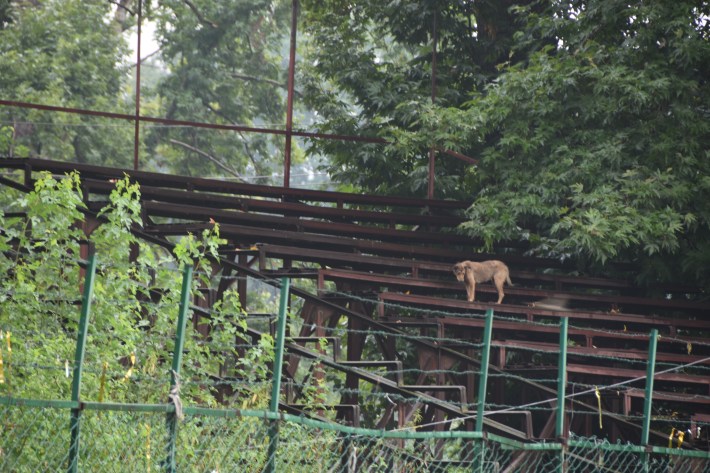
“In other states, it’s like even if there is political interference … they also do some work, you know, and then you tend to forgive certain things,” said Gowhar Geelani, a Kashmiri cricketer who is also a journalist and the author of Kashmir: Rage and Reason.
Ten years and a pile of cash could have fixed a lot. Kashmir gets so snowy and cold for so long that cricket is mostly impossible for half the year. You have to wait for the snow to melt, and then you have to wait for the ground to dry, but none of that would matter if there was just one indoor cricket academy. Even in summer, the pitches are pocked, rocky, and often shaped like amoebas. The wickets at these grounds can be unbowlable, so, when they can afford it, Kashmiris buy mats and bowl on those. Mats turn everyone into a bowler who can generate great bounce off each ball, a skill that that unfortunately doesn’t translate to regulation turf wickets. Batsmen get used to swiping at these springy balls and never learn how to handle the infinite subtleties of bowlers who play elsewhere.
Even when talent blooms in these conditions, the best players are left to decide between staying in Kashmir with very little access to high level coaching, or paying their way into a top academy in Mumbai or Delhi.
“If we have to learn swimming, we need to have a swimming pool,” said Mubashir Hassan, a local cricketer who eventually played for the same club team as Qaisar. “You don’t punish the generations that follow for this damage that has been done by any office bearers, you know?”
When I first met Hassan in late July, he was sitting with his back against the wall of his home’s greeting room, wearing a New York Giants shirt. He sometimes streams Giants games even though they start either very early or very late in Kashmir, because, like me, he’s enthralled by any sport he sees or even reads about. When he was about 12 he picked up a book on cricket and decided he had to play. Hassan got a pair of wicket keeping gloves and stood around at a nearby college ground until he managed to squeeze onto a team. He told them he was a wicket keeper even though he’d never really played at all, but his reflexes didn’t betray him.
Like Qaisar, Hassan was picked for the state team, only his time playing cricket ended the day his foot got jammed in the pedal brake of his motorcycle. His arch ripped and his tendons snapped. It was three years before he got out on a pitch again, and he couldn’t finish the match because his foot started bleeding.
He tried umpiring as a way to stick around the game, and found himself giving pointers after matches, helping teenagers with their throws or their stance. India’s cricket coaching hierarchy has three levels of certification, and Hassan got his first about eight years ago, started coaching the state’s under-19 team, and then … his coaching career just sort of went stagnant, another casualty of Kashmir’s lack of cricket infrastructure.
Things got even more difficult for Kashmiri cricketers in 2014, when the right-wing Bharatiya Janata Party dominated national elections and brought Prime Minister Narendra Modi to power. Modi—who for years was barred from the United States for doing nothing to stop anti-Muslim riots in the state of Gujarat that left at least 1,000 mostly Muslims dead while he was chief minister there—has always understood how to build a political base through nods to Hindu supremacy.
The BCCI wasn’t devoid of political pressure before 2014, but the board has never had such explicit links to the party in power as it does now. Jay Shah, the son of Modi’s right-hand man, Amit Shah, became BCCI secretary in 2019. Arun Dhumal, the treasurer, is the brother of one BJP member of parliament and the son of the former BJP chief minister of Himachal Pradesh. Under their tenure, the Motera Stadium in Gujarat was renamed for Modi and expanded until it was re-inaugurated this year as the biggest cricketing ground in the world. Sher-i-Kashmir Stadium (the translation is “Lion of Kashmir”) was named for Sheikh Abdullah, the region’s first prime minister, and there are plans to change that as well. Modi and his party have long tried to recast Sardar Vallabhbhai Patel, who served as India’s first deputy prime minister from 1947-1950, as a Hindu nationalist, and there are rumblings that “Patel” will eventually be on the stadium’s nameplate. India’s prime minister and Showkat Bakshi are ideological opposites, but they both know that cricket is politics, and Modi’s BJP has quickly molded the sport into a tool of political subjugation.
The Indian national team is everywhere. Turn on the TV in India and there’s a good chance that you will see Virat Kohli, team captain, speaking to you about buying a motorcycle or some Vicks. His sharply bearded face is always staring down at me from billboards, eyes narrowed like he wants to fight. Mahendra Singh Dhoni, forever an Indian icon for sealing their 2011 World Cup win, speaks with the charisma of an old puddle but is nevertheless constantly on my screen pitching some product or other. Sourav Ganguly, a former team captain and now president of the BCCI, at least has the decency to show up only when he wants me to watch an upcoming match. I once reached into a packet of napkins at my in-laws’ place and realized they were branded with the face of Sachin Tendulkar, still maybe the most legendary Indian cricketer of all.
Several of these guys, and others who still play for the national team, posted nauseatingly similar tweets earlier this year when Modi and company were trying to rid Delhi of thousands of farmers who were protesting new legislation that they said would cost them huge portions of their income. Rihanna and Greta Thunberg tweeted their support for the protesters, and suddenly India’s best male cricketers were tweeting about how their country won’t be intimidated by mysterious foreign networks. In February, Wasim Jaffer, a former national team player and coach for the state of Uttarakhand, was erroneously accused of favoring Muslims in his team selection. Though most of India’s famous cricketers know him, only one of any real stature said anything in his defense. A giant billboard of Kohli in camouflage used to greet anyone who left Srinagar’s airport, and posters of him and Dhoni loom over cricket bat factories in Kashmir where there were once pictures of Pakistani stars. Dhoni has even patrolled Kashmir with the army, who made him an honorary lieutenant colonel. He once wore an Indian army symbol on his wicket keeping gloves until the ICC asked him to stop, a request the BCCI grudgingly conveyed.
Even if a Kashmiri cricketer’s talent, ambition, and luck overcame all the structural issues, how is he supposed to settle into that kind of team? No Kashmiris were on the 2011 squad that won the World Cup, nor are any threatening to find more than a fleeting place on the team today. Some who might have had a shot opted to play in Europe instead of pulling on an Indian uniform, and plenty of players without the money needed for that sort of defection decided to just quit the sport.
“It’s become very difficult for any [Kashmiri] cricketer to have any political opinion explicitly expressed,” Geelani said. “It has economic costs, it has political costs. Right now, people think it’s very important to remain silent.”
Of course, as Geelani told me, it’s not as if the team would suddenly be inundated with Kashmiris if the bigotry and infrastructure woes vanished tomorrow. He thinks India has enough talent to send three teams to the next World Cup with a shot at the title. But he’s also found something a little off about the Kashmiris who do almost get there.
One of the last locals to get a lot of outside attention was Parvez Rasool, a bowler and one of the few from the valley who’s also known for his batting. It’s easy to find cricketers in Kashmir who can rattle off a list of contemporaries they think are more talented than Rasool, but in 2013 he was picked for the Indian Premier League, the world’s richest and most competitive club scene, and a year later he broke into the national team. He played twice for the country, 11 times for a few clubs, and that was it. But in Kashmir he’s figured out how to stick around.
Rasool tends to post Quranic verses after a good match. He’s open about his faith. But he also began meeting and working with whatever court-appointed administrators stepped in to run the state’s cricket administration over the years. In time, he became captain of the state team and, allegedly, the guy who picked the roster, forcing out any rivals.
“He’s a nice human being otherwise, but I’m saying this is how the system works,” Geelani said. “It’s like grooming for a future where they could project him as a political leader.”
“That’s why people in Kashmir are always skeptical of these quote-un-quote celebrities,” said Hafsa Kanjwal, the Kashmir scholar. “They feel that their celebrity status, even if they’re talented, they’re co-opted by the state. It happens a lot with artists and musicians, too.”
Earlier this year, a group of Jammu and Kashmir cricketers publicly accused Rasool of essentially being a cricket dictator, but a month later his perch got crowded when the BCCI took over operations in the state on a supposedly interim basis. They installed three men on the temporary board, two of whom are BJP mouthpieces.
The takeover was just one of the ways that the Modi regime has tightened its chokehold on Kashmir. In 2019, his government revoked the state’s autonomy, shut down high speed internet for a year and a half, locked up Showkat Bakshi, and put a bunch of other prominent Kashmiri politicians under house arrest. In 2020, non-Kashmiris were given the legal right to own land in the valley. The army is now allowed to point to a spot of ground and appropriate it on demand.
All this upended Kashmiri lives well before COVID-19, and cricket is a part of how the government will restore their version of order. Qaisar says the army is already hosting matches. Their tournaments are billed, predictably, as a way to make sure kids don’t become the “stone-pelting” type. The contests are disciplined and structured, unlike the chaotic, anyone-can-play-as-long-as-they-pay private competitions Kashmiris have had to rely on in the absence of a well-financed administration.
The interim officials have also begun to impose themselves, questioning decisions Qaisar and other state team selectors made when they picked teams of the past, asking why a Kashmiri was chosen instead of a particular player from Jammu, where people are predominantly Hindu.
“They have come with this idea that they have to take revenge,” Qaisar said.
I met up with Hassan at the State Cricket Academy in Srinagar, where he is now in charge. He’d caught COVID-19 at the start of July, and so he hadn’t been behind his desk in a month. His eyes kept drifting before he tried blinking himself back into focus. Two guys walked in and opened a cabinet drawer behind him, pulling out jerseys wrapped in crinkly plastic. Another guy stepped inside and took a phone call, yapping like he was shouting over the engine of a plane. I asked Hassan if he wouldn’t mind showing me the practice wickets out back.
He was a bit reluctant. It had rained for 10-12 hours the night before, so the four wickets—the only free practice turf wickets in Kashmir—would be swamped, but he also didn’t look like he remembered how to be in an office just yet. We walked outside and across a wide parking lot, stepping around small piles of dog shit. The wickets were indeed soaked. Still, it wasn’t hard to imagine cricketers swinging and bowling away on a past or future afternoon, focused and removed from the honking city. They might still have been able to do that after a rainy day, but last year the roof over the wickets collapsed in a snowstorm. Black poles stuck out of the ground, holding up nothing. The pandemic has prevented anyone from rebuilding it, and right now it’s not clear when construction might start.
Much of Hassan’s cricketing life has come to be defined by waiting. He waited eight years to get a shot at his level two coaching certification, which was delayed until this year because there was no money or administration to send him to the required courses. He’s now set to go to Bengaluru for training and testing in September, but at this point he talks about a cricketing future like it’s just the option in front of him at the moment, not something he’s pursuing with the zeal of a boy who’s just started reading about the game. Hassan has a masters degree in zoology, something he picked up when he wasn’t on the pitch, and he was offered a research job in Oman before COVID-19 kicked that can down the road and perhaps into the gutter. But maybe there’s still a chance there, if the position is still open, if Oman lets in Indians anytime soon. He’s one of the Kashmiris who might have the means to get out, and he talked about it a lot as he stood by the wickets.
Looking out at those practice grounds, it was easy to be reminded of Sher-i-Kashmir Stadium, all that potential in disrepair.
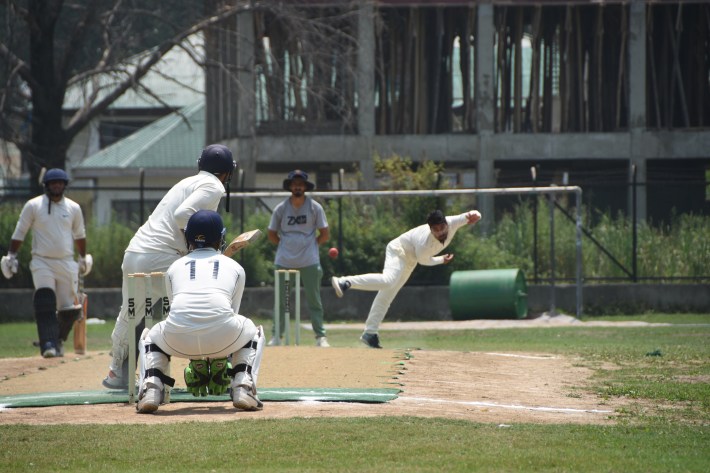
It’s possible that in a few years, after the BCCI has put someone permanently in charge, drainage pipes will be relaid under the stadium’s ground, a new bed of grass will grow thick and even, and the old bleachers will be knocked over and replaced with cushioned seats. Maybe India will play their first international match in Srinagar for some 40 years, against a team like Zimbabwe, someone they’re sure to obliterate. The stadium will be packed, full of people bussed in from outside the valley, which is how the BJP likes to make their events in Kashmir seem well-attended. In the press, the new administration’s president will insist that it’s Sardar Vallabhbhai Patel Stadium now, like the name will stick.
Much of Kashmiri public life has retreated in the last two years, like a body pulling blood from its extremities in order to survive, and so on match day, Kashmiris will watch from home. That’s how many of them tend to watch cricket now, in private, less publicly celebratory when India goes down. In 2014, a group of Kashmiri college students in the state of Uttar Pradesh were momentarily charged with sedition for cheering on Pakistan, and it’s not an exaggeration to say that celebrating an Indian defeat on their own block could get them shot. But Kashmiris have long used their small privacies to get in little digs at their overlords. Away from the eyes of soldiers and street cameras, Geelani said, they’ll always support the green shirts of Pakistan, or the next best thing: whoever’s batting opposite the blues of India.



